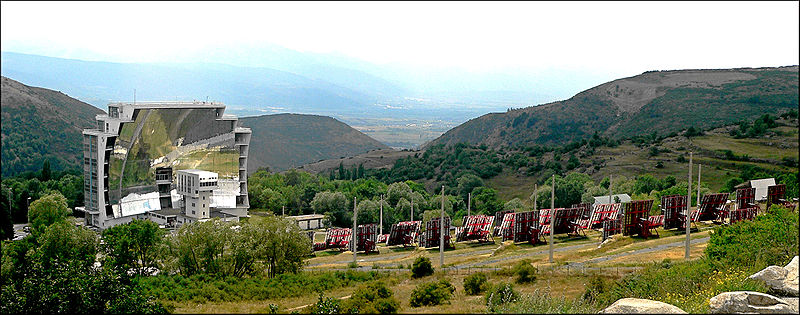
RANDOM PAGE
SITE SEARCH
LOG
IN
SIGN UP
HELP
To gain access to revision questions, please sign up and log in.
A2
The Cost of Electricity
If 230 Volt mains power is available, this is generally the lowest cost way to get power. Mobile devices and remote locations do not have access to mains power so the alternatives below must be considered. Mains power is not 100% reliable so mission / life critical systems need backup power sources.
Measuring Stored Energy - Joules per Kilogram
- This is measured in Joules per Kilogram or more often kilojoules per kilogram.
- This figure is useful when weight is an issue.
Battery Capacity - Ampere Hours
- A 40 ampere-hour battery can supply, for example,
- 40 amps for one hour
- 1 amp for 40 hours or
- 5 amps for 8 hours.
- Battery_Life = Ampere_Hours / Current_Flowing
Fixed Installations
- Use mains power but if the mains power fails, a backup may be needed for example
- Telephone exchanges
- Operating theatres
- Underground railway stations.
- Backup Power
- Battery
- Diesel or Petrol Generator
- Fuel Cell
- Capacitors ( low voltages only, hold less charge than batteries, fast re-charging )
Small Mobile Devices
Have to use stored energy.
- Robots
- Phones
- Tablets and PDAs
Power Sources
- Battery Power
- Fuel Cells (methanol)
Large Mobile Devices
Have to use stored energy.
Power Sources
- Diesel or Petrol Generator
- Large Batteries
- Fuel Cells (hydrogen or methanol)
Battery Types
Most rechargeable batteries take two or more hours to charge.
- Non rechargeable
- Alkaline batteries
- The most expensive option for heavily used devices
- After a period of use, cells may leak potassium hydroxide which corrodes connectors and surrounding circuits
- Rechargeable
- Lead Acid
- Poor energy-to-weight ratio 150kJ/kg
- Able to supply very large currents for short times (Good for starting up trucks or cars).
- Able to supply very large currents. This makes misuse hazardous!
- Nickel Metal Hydride
- Better energy-to-weight ratio 300 kJ/kg
- Slower loss of charge when not in use
- Lithium Ion
- Popular
- Best affordable energy-to-weight ratio 500 kJ/kg
- No memory effect - other cells can behave as though they are flat even when quite fully charged.
- Slow loss of charge when not in use
- High energy density but this may cause them to explode if mistreated.
- Lithium Polymer
- Best capacity at 1000 kJ/kg
- Less likely to explode
- Costly
New types are being developed!
- Metal Air batteries use oxygen from the atmosphere as one of the reactive chemicals. This allows higher energy densities to be achieved.
Inverters
- Convert low voltage DC into high Voltage AC ( Often 230 V ).
- Contain an oscillator circuit.
- Contain a push pull amplifier.
- Contain a transformer to step up the AC output Voltage.
- Are not very energy efficient.
- Are used to provide a short lived 230 Volt supply allowing time to start up a petrol or diesel generator.
- Are used to keep computer servers, phones and computer networks working for a short time.
- This allows time to start a backup generator or a controlled computer shut down can take place.
Fuel Cells
- Can be recharged extremely fast by simply re-filling with hydrogen or alcohol.
- Fuel cell technology is becoming cheaper and may soon be preferred to batteries.
- Small battery-sized fuel cells may soon be common.
- Alcohol (methanol) - Easy to store and transport.
- Hydrogen - Difficult to store and transport.
Supercapacitors
- These are low voltage capacitors with capacitances measured in Farads.
- They are useful for temporary power backup to cover short mains power failures.
- They provide low current memory backup while the main power source is turned off.
- There is rapid progress with this technology and there is a possibility that these capacitors might one day replace batteries.
- They charge and discharge faster than conventional batteries but slower than ordinary capacitors.
- Hybrid vehicles can take advantage of supercapacitor properties as well as conventional battery properties.
- Supercapacitors can ge charged and emptied more often than rechargable batteries before they fail.
Renewable Energy Sources
May be better for the environment.
- Wind Turbines - Well established by 2009 and still growing fast.
- Photovoltaics - Commonly used but only on small scale installations. Still expensive.
- Wave Power - Still Experimental.
- Tidal Power - Still Experimental.
- Solar Furnace - Still Experimental.
- Geothermal Power - In Iceland, heat from volcanoes is used for electric power generation and for heating homes and agriculture.
Photovoltaic Farm
Here is a hillside in Spain covered in photovoltaic panels. The panels could be made slightly more efficient by having them track the sun.

Solar Furnace
This is used for experimental science but a similar device could be used for power generation.

reviseOmatic V3
Contacts, ©, Cookies, Data Protection and Disclaimers
Hosted at linode.com, London



